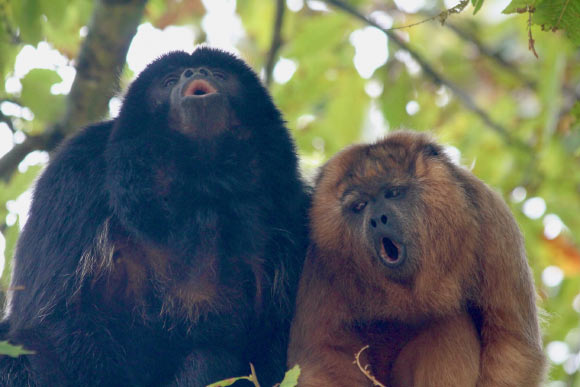Now Reading: Study Finds New World Monkeys Are Exceptional Yodelers
-
01
Study Finds New World Monkeys Are Exceptional Yodelers
Study Finds New World Monkeys Are Exceptional Yodelers

Rapid Summary
- Key Discovery: Research reveals how certain vocal calls in non-human primates, including apes and monkeys, are produced through specialized anatomical structures called vocal membranes.
- Anatomical Feature: Vocal membranes are thin tissue located in the larynx of non-human primates, enabling a wider range of frequencies but introducing instability compared to human speech.
- Research Focus: Researchers studied various New World monkey species (e.g., black and gold howler monkeys, tufted capuchins) at a sanctuary in Bolivia to better understand their vocal production.
- Findings:
– Two modes of vibration were identified: one producing low-frequency sounds and another involving the vocal membranes for high-frequency oscillations similar to yodeling.
– Vocal transitions can span over three octaves,far exceeding voice breaks typically seen in humans (limited to a single octave).
– Techniques used combined physical analysis and sound recording methods.
- Evolutionary Insights:
– Vocal membranes contribute to complexity but destabilize pitch; humans lost this feature during evolution for stable speech tones suitable for language composition.
– This adaptation by monkeys supports complex social dialogue needs.
for more details on the research findings, Read more.
Indian Opinion Analysis
This discovery provides interesting insights into evolutionary changes linked wiht speech production across species. While India is not directly involved with this specific study, understanding such intricate animal communication systems holds broader scientific meaning that could inform work on artificial intelligence-driven linguistics or bioacoustics research globally-including collaborations with Indian institutions.
The findings highlight how anatomical features shape communication methods critical for social interaction. For India’s burgeoning interest in wildlife conservation efforts and multidisciplinary science initiatives (spanning biology,AI),such studies contribute valuable knowledge about behavioral ecology that could bolster efforts around preserving biodiversity hotspots like Western Ghats or Sundarbans where primate species thrive.By appreciating evolutionary trade-offs between complexity vs. stability in voice mechanisms among distinct species groups-a lens provided by this research-Indian scientists may explore similar narratives within indigenous ecosystems while also advancing global connectivity through scholarly exchange programs gravitating toward cutting-edge zoology expertise worldwide.























